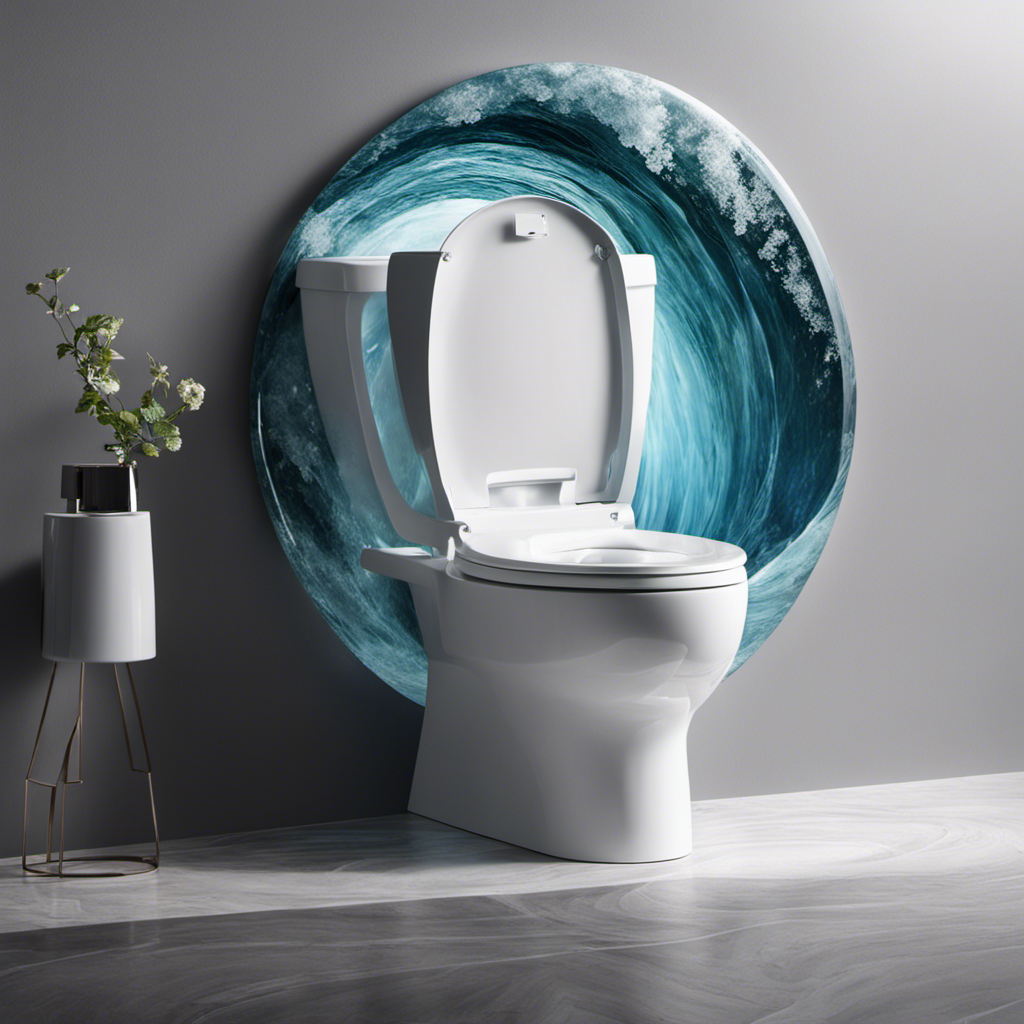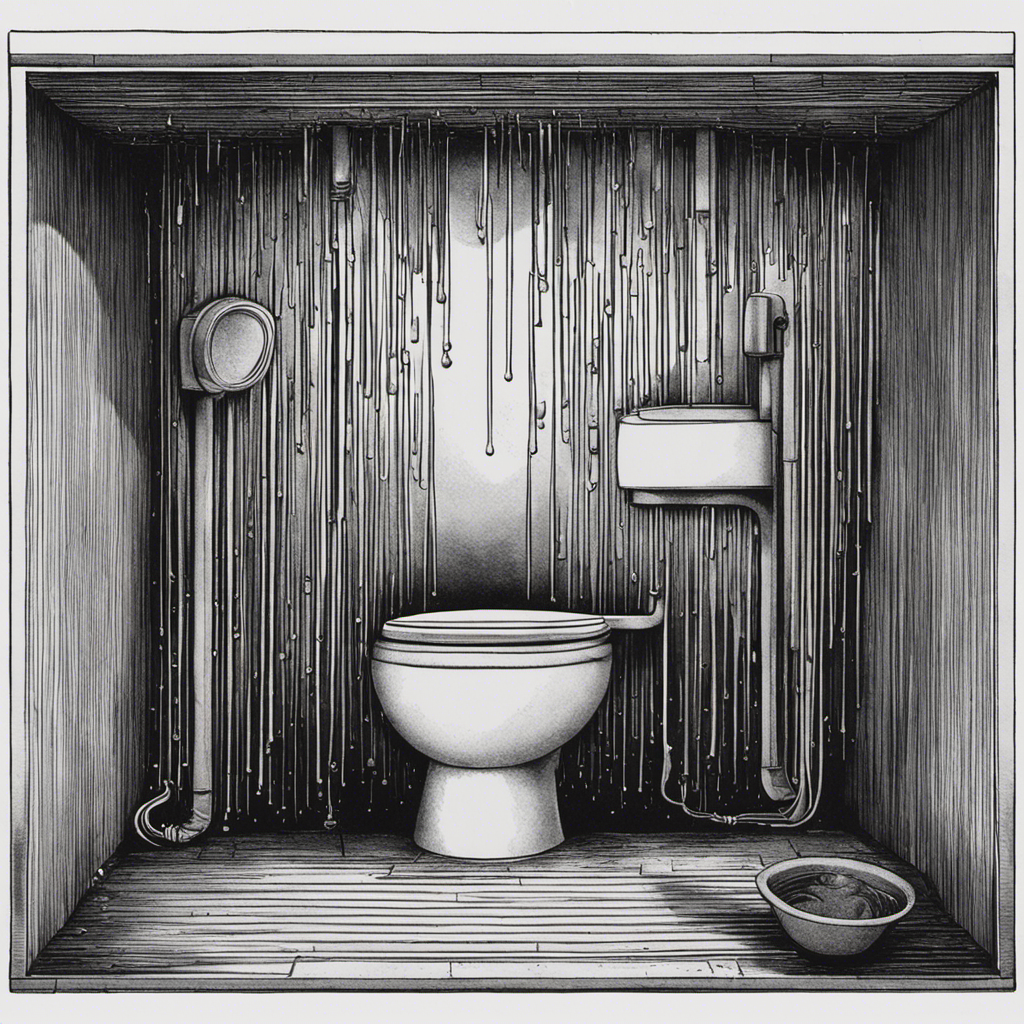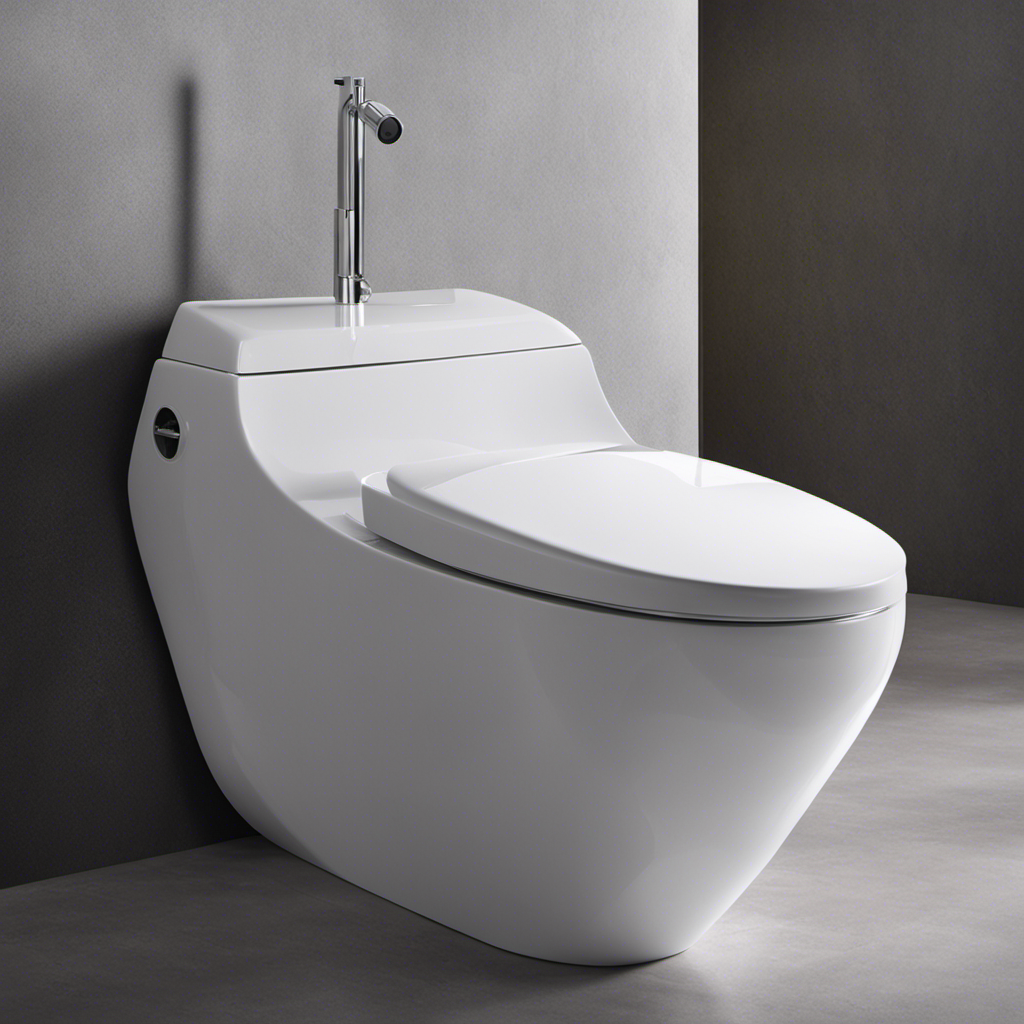As a homeowner, it can be quite alarming to witness the water in your toilet rising instead of going down when you flush. It’s like a ticking time bomb, ready to overflow and cause a messy disaster.
But fear not, because in this article, I will guide you through the common causes of this issue and provide you with step-by-step solutions to fix it yourself.
So, let’s dive in and tackle the rising toilet water problem head-on!
Key Takeaways
- Common causes of rising toilet water include a clogged drain pipe and the flushing action creating water pressure that backs up into the bowl.
- Understanding the plumbing system in your toilet is important, including knowing about the fill valve, flush valve, float ball or float cup, and overflow tube.
- When toilet water keeps rising, steps to take include inspecting the toilet tank for malfunctions or blockages, checking the flapper for proper sealing, clearing clogged drain lines, and evaluating the vent pipe for obstructions.
- DIY solutions for fixing rising toilet water include checking and replacing the flapper valve, adjusting the float to the correct level, cleaning the fill valve, and inspecting and repairing the refill tube. If issues persist or there are signs of a clogged sewer line, it may be necessary to call a professional plumber for long-term solutions. Regular toilet maintenance can help prevent costly repairs and inconvenience.
Common Causes of Toilet Water Rising During Flushing
One common cause of your toilet water rising when you flush is a clogged drain pipe.
When you flush the toilet, water flows from the tank into the bowl and through the drain pipe to the sewer system. However, if the drain pipe is clogged, the water cannot flow freely, causing the water level in the toilet bowl to rise.
This rise in water level occurs because the water pressure from the flushing action has nowhere to go. As a result, the water backs up into the bowl, creating the rise in water level.
It is important to address a clogged drain pipe promptly to prevent further issues with your toilet and maintain proper water flow.
Understanding the Plumbing System in Your Toilet
Understanding the plumbing system in your toilet can help you troubleshoot issues like the water level increasing during the flushing process. Here are four key components of toilet tank mechanics that you should be familiar with:
-
Fill valve: This valve controls the flow of water into the toilet tank after each flush. If it malfunctions, the water level may rise excessively.
-
Flush valve: This valve is responsible for releasing water from the tank into the bowl during flushing. If it doesn’t close properly, the water level can continue to rise.
-
Float ball or float cup: These devices are attached to the fill valve and control the water level in the tank. If they are damaged or misaligned, the water level may rise too high.
-
Overflow tube: This tube prevents the water in the tank from overflowing. If it is clogged or damaged, the water level can rise above normal.
Steps to Take When Toilet Water Keeps Rising
If your toilet keeps filling up, it’s important to check the key components of the plumbing system to identify the issue. Troubleshooting toilet water rising issues can be a daunting task, but with a systematic approach, it can be resolved effectively.
Here are the steps to take when dealing with this problem:
-
Inspect the toilet tank: Check the fill valve and float mechanism for any malfunctions or blockages. Adjust or replace them if necessary.
-
Examine the flapper: Ensure that the flapper is sealing properly after each flush. A worn-out flapper can cause water to continuously flow into the bowl.
-
Check the drain line: A clogged drain line can lead to water backing up into the toilet. Use a plunger or a drain snake to clear any obstructions.
-
Evaluate the vent pipe: A blocked vent pipe can prevent proper air circulation and cause water to rise. Clear any debris or obstructions in the vent pipe.
DIY Solutions for Fixing a Toilet With Rising Water
When dealing with a toilet that has water continuously filling up, you can try these DIY solutions to fix the issue.
-
Check the flapper valve: The flapper valve is responsible for controlling the flow of water from the tank to the bowl. If it is worn or damaged, it can cause water to continuously fill up. Replace the flapper valve if necessary.
-
Adjust the float: The float is a small device that regulates the water level in the tank. If it is set too high, it can cause the water to overflow. Adjust the float to the correct level to prevent toilet water overflow.
-
Clean the fill valve: The fill valve is the mechanism that fills the tank with water after flushing. Over time, it can become clogged with debris, affecting its performance. Clean the fill valve to ensure proper water flow.
-
Inspect the refill tube: The refill tube is responsible for directing water into the overflow pipe. If it is damaged or improperly connected, it can cause the water to rise. Check the refill tube and make any necessary repairs.
When to Call a Professional Plumber for Rising Toilet Water
If you are experiencing persistent issues with your toilet, it may be time to contact a professional plumber for assistance. Signs of a clogged sewer line, such as rising toilet water, should not be ignored.
While some DIY solutions may temporarily fix the problem, a professional plumber can provide a long-term solution. Regular toilet maintenance is crucial to prevent clogs and other plumbing issues. Neglecting maintenance can lead to costly repairs and inconvenience.
A professional plumber has the expertise and tools to accurately diagnose the problem and offer the most effective solution. They can also provide advice on proper toilet maintenance to prevent future issues.
Don’t wait until the problem worsens, contact a professional plumber to address rising toilet water and ensure the proper functioning of your plumbing system.
Frequently Asked Questions
What Are the Potential Health Risks Associated With Toilet Water Rising During Flushing?
When toilet water rises during flushing, there are potential health risks to consider. Some causes of this issue include clogged pipes or a faulty water valve. It is important to address these problems promptly to prevent any health hazards.
Can a Clogged Sewer Line Cause Toilet Water to Rise During Flushing?
Can a clogged sewer line cause toilet water to rise during flushing? Yes, it can. When the sewer line gets blocked, the water has nowhere to go, causing it to rise in the toilet. To unclog it, try using a plunger or calling a plumber.
How Can I Prevent Toilet Water From Rising in the Future?
To prevent toilet water from rising in the future, I troubleshoot toilet issues like checking for clogs, ensuring proper flushing mechanism, and using a plunger or auger if necessary. Regular maintenance helps prevent such problems.
Does the Age of the Toilet Affect the Likelihood of Water Rising During Flushing?
The age of a toilet can impact the likelihood of water rising during flushing. Proper toilet maintenance is crucial in preventing this issue. Additionally, water pressure plays a significant role in the flushing process.
Are There Any Specific Toilet Models That Are More Prone to Experiencing Rising Water During Flushing?
Some toilet models are more prone to experiencing rising water during flushing. Common causes include clogged pipes, faulty valves, or inadequate water pressure. It’s important to choose a reliable toilet that minimizes the risk of water level issues.
Conclusion
In conclusion, dealing with a toilet that has rising water during flushing can be a real headache. It symbolizes the frustration and inconvenience that can come with plumbing issues.
However, by understanding the common causes and steps to take, you can tackle the problem head-on. DIY solutions may work for minor issues, but if the problem persists or worsens, it’s time to call in a professional plumber.
Don’t let rising toilet water dampen your spirits, take action and restore peace to your bathroom.










